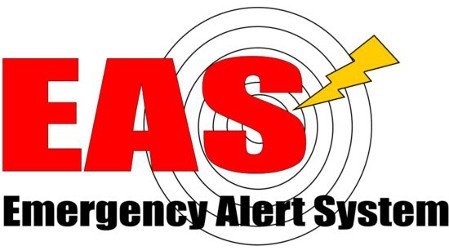Initial Results of 2017 National EAS Test Show Improvement
WASHINGTON—A preliminary analysis of results from the 2017 nationwide EAS test in September show overall improvement compared to last year’s test, but the performance of TV broadcasters appears to have slipped slightly in one key area, according to a public notice from the FCC’s Public Safety and Homeland Security Bureau released last week.

The nationwide test, which took place at 2:20 p.m. EDT on Sept. 27, was conducted to determine the reliability and effectiveness of the Emergency Alert System. The test placed special emphasis on assessing the performance of FEMA’s Integrated Public Alert and Warning System (IPAWS), the gateway for dissemination of common alerting protocol (CAP) EAS alerts to EAS participants.
The initial findings, released Dec. 7, show 2,283 television broadcasters, or 83.5 percent, successfully retransmitted the EAS alert during the test vs. 85.3 percent of the 2,601 that did so last year—a slight percentage decline.
For the test, participants around the country were required to submit three separate filings with information that in the aggregate gave the bureau the data used for its initial assessment.
Among the overall findings:
· 19,069 radio and TV broadcasters, cable systems, IPTV providers, wireline video systems and other participants from all 50 states and U.S. territories filed their EAS receipt and retransmission results;
· 95.8 percent of them received the test alert vs. 95.4 percent in 2016;
Get the TV Tech Newsletter
The professional video industry's #1 source for news, trends and product and tech information. Sign up below.
· 91.9 percent successfully retransmitted the test alert vs. 85.8 percent in 2016;
· 89 percent of those filing the form that specified how they received the alert and any complications experienced no problems receiving the alert vs. 81.5 percent in 2016;
· 88.3 percent of the same group experienced no complications transmitting the alert vs. 80.2 percent in 2016;
· 40.7 percent of this group reported first receiving the alert over the air vs. 56.5 percent in 2016;
· 59.3 percent of the group first received the alert via IPAWS vs. 43.5 percent in 2016; and
· 207 participants reported retransmitting the IPAWS-generated Spanish language version of the alert vs. 75 in 2016.
While these initial findings offer a first look at what actually transpired on Sept. 27 during the test, the bureau and FEMA will continue to analyze the results and release more information as it becomes available, the notice said.
The public notice detailing the initial results is available on the FCC website.
Phil Kurz is a contributing editor to TV Tech. He has written about TV and video technology for more than 30 years and served as editor of three leading industry magazines. He earned a Bachelor of Journalism and a Master’s Degree in Journalism from the University of Missouri-Columbia School of Journalism.

